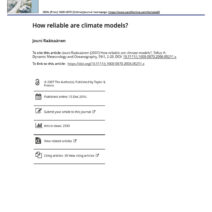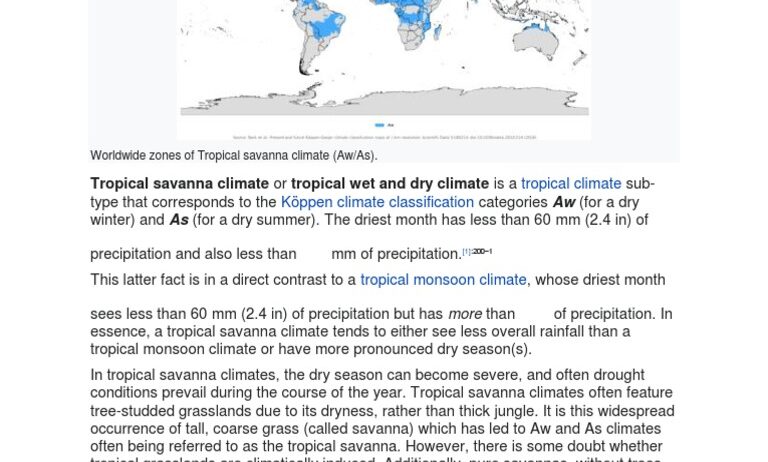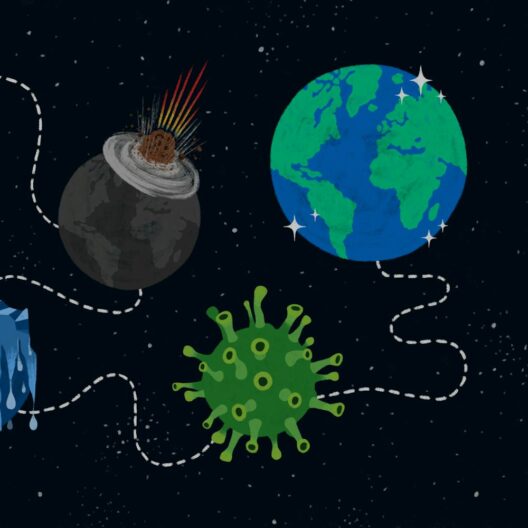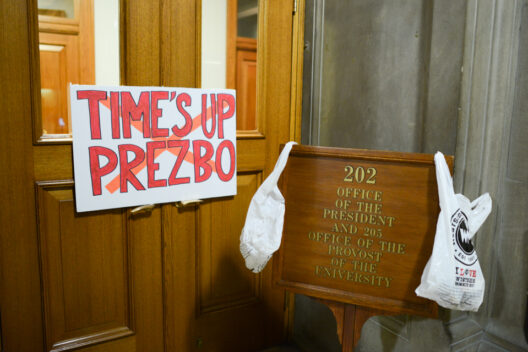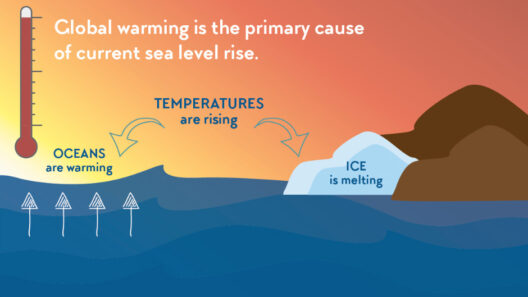The savanna, characterized by its unique blend of grasslands and scattered trees, presents a fascinating interplay between ecological components and climatic dynamics. This biome is predominantly located in regions close to the equator, where the climate is dictated by seasonal variations in rainfall and temperature. To explore the savanna climate fully, one must examine its defining parameters, seasonal characteristics, and the underlying influence on biodiversity.
At its core, the climate in the savanna is recognized as a tropical savanna climate (Köppen climate classification Aw), which is marked by distinct wet and dry seasons. The average temperature typically surpasses 20°C (68°F) throughout the year. However, the most striking feature is the pronounced seasonal rainfall, which can oscillate dramatically from one period to another. During the wet season, which generally spans the months of May to October, the savanna experiences abundant precipitation, ranging from 25 to 50 inches (635 to 1270 mm). This deluge juxtaposes sharply against the dry season, characterized by prolonged droughts, where rainfall may drop to less than 5 inches (127 mm).
The variation in moisture availability is not an arbitrary phenomenon; rather, it is a product of complex atmospheric circulations. The movement of the Intertropical Convergence Zone (ITCZ), a belt of low pressure near the equator, plays a critical role in these climatic patterns. Its northward movement during the summer months draws in moist air from surrounding oceans, resulting in heavy downpours. Conversely, as the ITCZ retreats, dry conditions ensue, putting immense stress on the ecosystem, leading to a cyclical resurgence of growth when the rains return.
Such a climate creates an intriguing dynamic in the savanna ecosystem. The lush growth during the wet season provides ample resources for a plethora of herbivores, including iconic species such as elephants, giraffes, and various antelope. During this time, the vast expanse of grasslands transforms into a vibrant tapestry of life, where plant species such as elephant grass (Pennisetum purpureum) thrive and flowering plants burst into color. This explosion of flora attracts a multitude of insects, birds, and predators, creating a thriving network of interdependence.
However, the dry season imposes a stark contrast. As the moisture retreats, the once-lush landscape becomes arid and cracked. Grasses, which dominate the terrain, develop adaptations to survive drought, including deep root systems and drought-resilient growth patterns. During this period, the vegetation takes on a golden hue, rendering the landscape into an almost surreal scene. Many herbivores migrate in search of greener pastures, establishing a pattern of seasonal movement that is pivotal for their survival. Predators, such as lions and hyenas, follow these herds, maintaining the delicate balance of the food web.
The seasonal characteristics of the savanna’s climate forge a captivating relationship between its inhabitants and the environment. The cyclical nature of rainfall not only influences animal behavior but also affects the flora of the region. Certain plants exhibit synchroneity with the rainfall patterns; their flowering and fruiting processes are intricately tied to the onset of the wet season, ensuring that they capitalize on the influx of pollinators and seed dispersers when resources are plentiful.
In addition to the fundamental climatic elements, external factors contribute to the savanna’s intrigue. Human activities, such as agriculture and urban expansion, pose significant threats. The increase in land conversion leads to habitat fragmentation, resulting in diminished biodiversity and disruption of migration routes. Such anthropogenic pressures necessitate a concerted effort to balance human needs with the ecological integrity of the savanna.
The phenomenon of fire is another critical component of the savanna climate. While it may seem destructive at first glance, wildfire is a natural ecological process in these grasslands. Fires, whether caused by lightning or human activity, prevent woody encroachment, allowing grasses to flourish. Many savanna plant species have evolved to withstand and recover from fires, making this process essential for maintaining the ecological balance. Post-fire, the landscape witnesses a regeneration that not only revitalizes the soil but also promotes increased biodiversity.
The savanna climate offers a captivating tableau that invites further exploration. Its seasonal rhythms and inherent ecological connections spark curiosity and appreciation, illustrating the delicate balance between climate and life. Yet, it remains crucial to acknowledge the anthropogenic influences threatening this ecosystem. A sustainable equilibrium must be pursued, one that recognizes the intricacies of the savanna and its vital role in our planet’s climate system.
As the ramifications of climate change continue to unfold, the fate of savanna ecosystems hangs in the balance. The increased frequency and intensity of extreme weather events, driven by a warming climate, may further disrupt the established patterns that define the savanna. Continued vigilance and stewardship will be imperative to preserve this fascinating biome for future generations.
In conclusion, the climate of the savanna is not merely a backdrop to the vibrant life it hosts; it is an active participant in shaping the destinies of countless species. The unique interplay of drought and deluge crafts a picturesque yet precarious existence within this biome. Understanding these patterns allows us to appreciate and advocate for the preservation of the savanna—a world where life thrives under the tropical sun.

